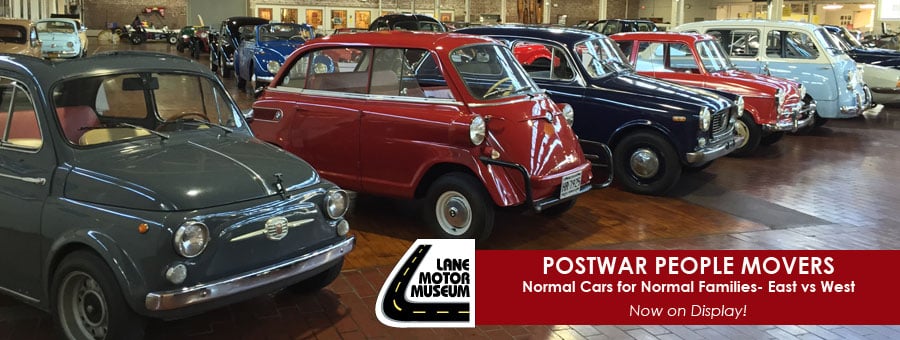Growing up in the USA probably evokes fond memories of “the family truckster”. Some families had sensible sedans, while others may have had a minivan or a wagon. Who doesn’t remember the family Impala, Roadmaster, or Country Squire?
The post-World War II period in Europe was no different. As governments rebuilt their infrastructure and families rebuilt their lives, the need for sensible transportation was vital to getting the economy running again. The postwar period from the late 1940s to the early 1970s in Western Europe brought about an unprecedented economic boom. In Germany it was called “das Wirtschaftswunder”, in Italy, “il Miracolo Economico”, and in France, “les Trente Glorieuses”. No matter the name, the meaning was the same – new wealth, strong employment, and easier access to power and resources – it was a period of growth and prosperity in the West.
The largely Communist East, on the other hand, did not enjoy the benefits of the European Recovery Program, aka the ERP or The Marshall Plan. Many Eastern industries were nationalized and consolidated under Communist rule, including automobile manufacturing. Consequently, many familiar marques were lost, but a few new ones were formed, or reborn. But, again, the need for sensible, affordable transportation remained, as strong here as across the border.
Seen here are but a few examples of “the family car” as may have been found on Eastern and Western European streets during the period of 1945-1973, or “the Glorious Thirty” as France called it. While the needs on both sides were very similar, it should be noted that the ability to fulfill those needs were far different, East and West. The West enjoyed access to fresh ideas, raw materials, and seemingly limitless energy, while the East struggled with leftover ideas, worn-out equipment, and trade sanctions.
Both sides managed to make do, just in different ways…
EAST
Buying a car in East Berlin? Put your name on a list and be prepared to wait – most likely several years. Demand outstripped supply by 5X! Used cars were instantly attainable, and commanded far higher prices than new ones!
Cars were often heavy body-on-frame, of poor material quality, and used antiquated, noisy, smoky two-stroke engines. Some, like Tatra, were quite advanced, but only meant for the elite.
Car model life was often measured in decades. Trabants and Wartburgs were virtually unchanged from 1957 to 1990.
WEST
Buying a car in Munich, Paris, or Rome? Walk in with funds and drive away!
Many cars were of galvanized unibody construction with powerful, quiet four-stroke engines and decent creature comforts, like heaters.
Manufacturers brought fresh new designs to market regularly, incorporating new technology such as fuel injection, disc brakes, and improved safety equipment.

